
What to do with Nautical Treasures and Tchotchkes
What kinds of nautical knickknacks adorn your shelves, end tables, and nooks and crannies? What sort of boating bric-à-brac have you either rescued from a dumpster or paid a pretty penny for? What kind of salty maritime detritus is at once worthless in monetary value, but priceless to you in the currency of memories and charm?
Deep in the quarter-berth lockers of my old boat, the 1963 Columbia Challenger Esprit, I found a set of old — very old — navigation lights.
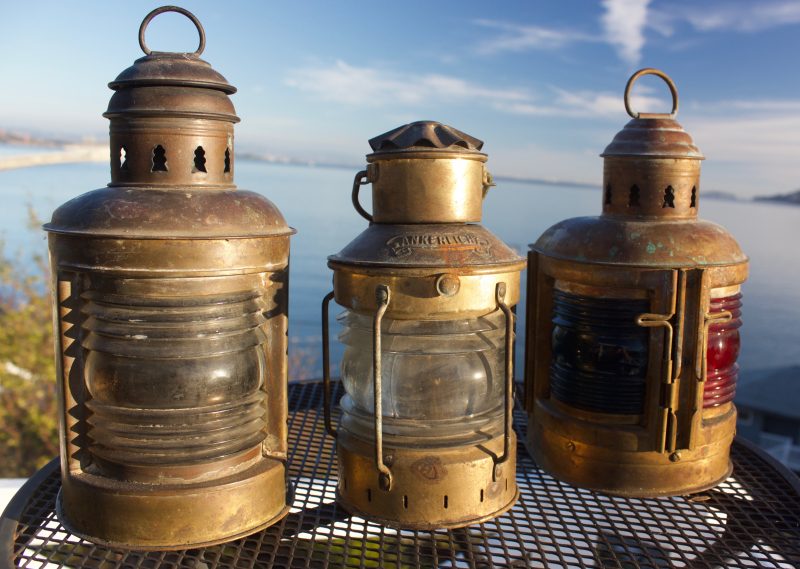
Well, technically they’re not lights at all, but lanterns. Each one has a reservoir for flammable fluid, and a wick. They were, at some point, fully functional as nav lights, but I instantly saw them as lovely maritime antiques. My immediate thought was, “Let’s get some polish on these babies,” but I remembered a nugget of wisdom before I took rag and chemicals to metal. The best way to ruin antiques, I’d heard, is to try to over-aggressively restore them — or to think that they need “restoring” at all.
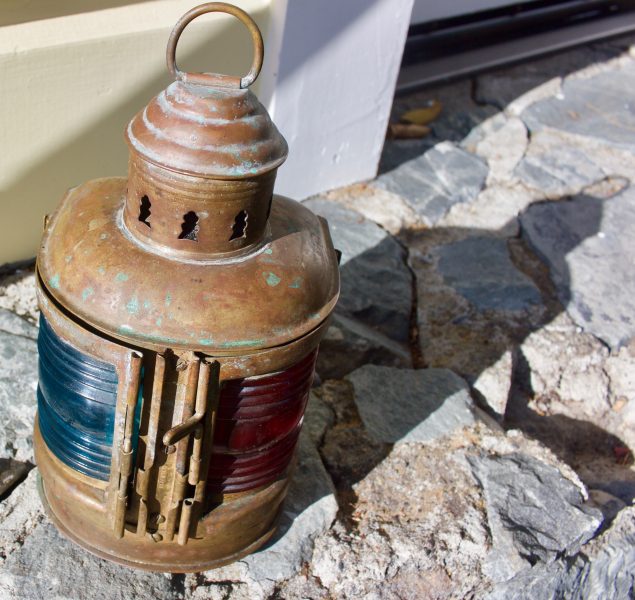
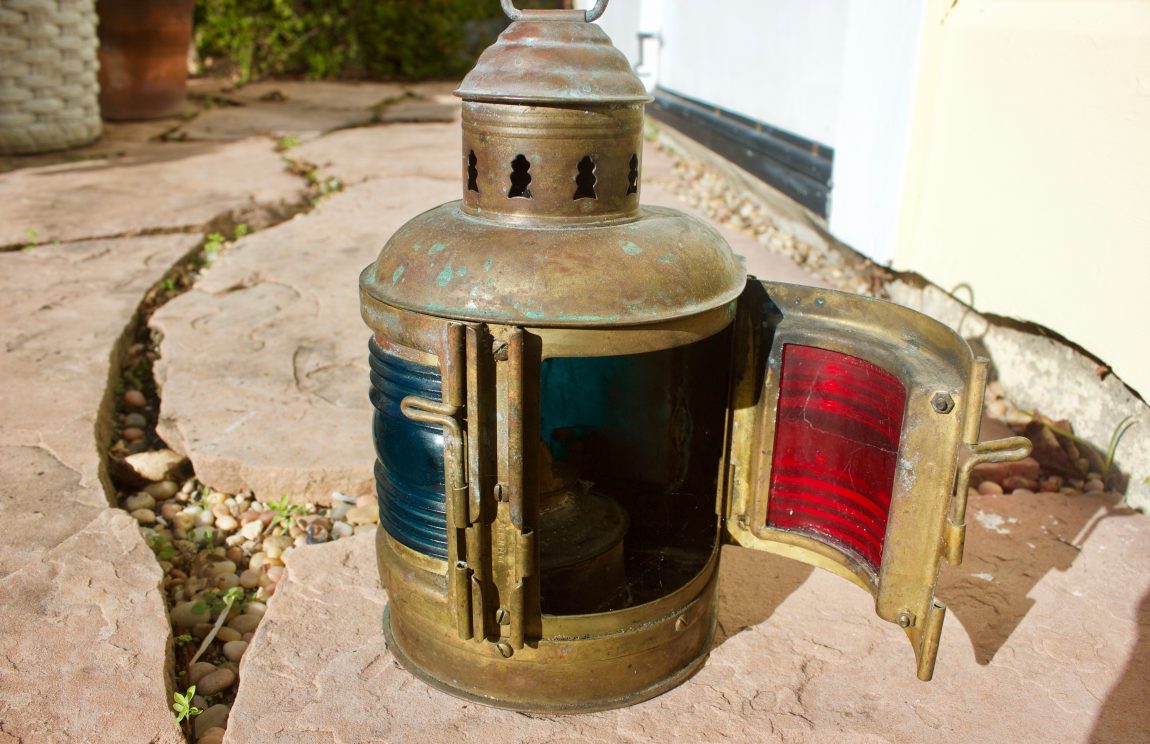
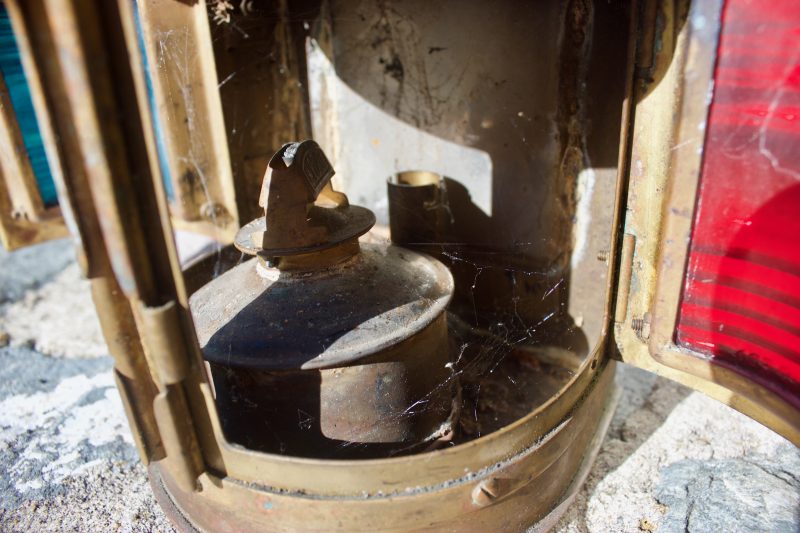
The running lights have lovely splotches of turquoise oxidation splattering the warm, copper-colored metal. While there’s part of me that would like to see some shine on each lantern, I much prefer the weathered, natural look, though I’m still a little curious to see how the sunlight and metal might interact, if the metal were properly encouraged.
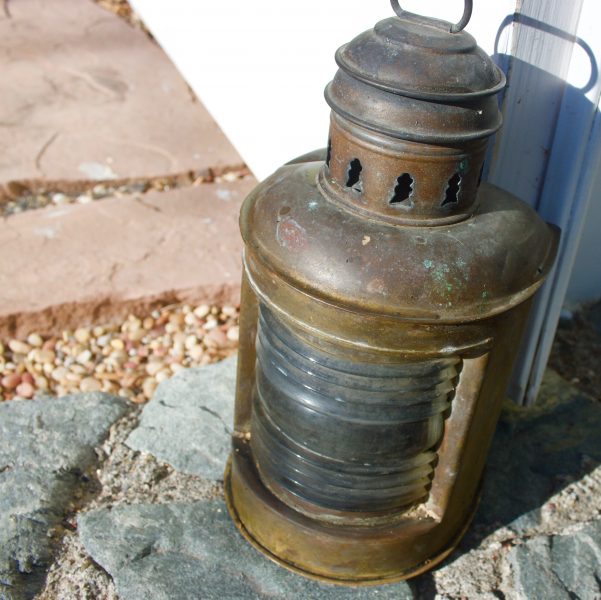
If I were going to experiment with polishing (and I will, eventually), then I’d start with the stern light, which has lots of room — or a “non-display side” — to test a few polishing products and techniques.
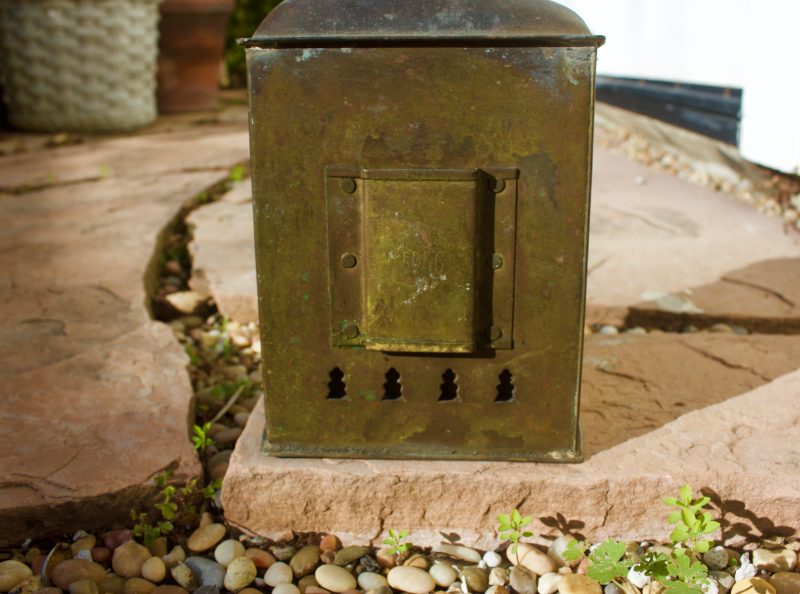
The ‘ankerlight’ seems to be made from a slightly different metal (or a different grade/treatment of the same metal); it’s more blond than gold. If shined, I think it would take on that kind of ostentatious gleam that screams cheap nautical kitsch sold at some overpriced seaside tourist trap. To me, this lantern is just right with some weather on it.
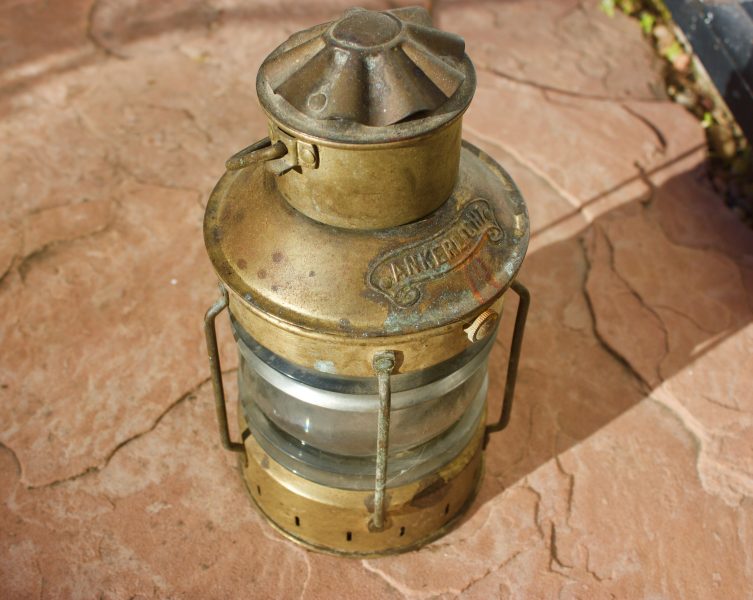
I appreciate my own caution and reserve in not soaking the lanterns in high-octane polishes, but I consider some competence in working with maritime metals as an important addition to my overall knowledge of all things boats. This is certainly one of the more ‘yachty’ sides of seamanship, but surely there are widespread benefits to knowing how to properly treat metal.
I also appreciate that, after years (even decades) of eliminating crap and minimizing my possessions, I finally have the luxury to collect stuff. Indeed, accumulating tchotchkes somehow feels very adult to me. I have moved at least once every two years for well over 35 years of my life, and accumulating charming nautical trinkets feels like a privilege for the non-mobile. (I even find myself wanting to — gasp — go nautical antiquing.)
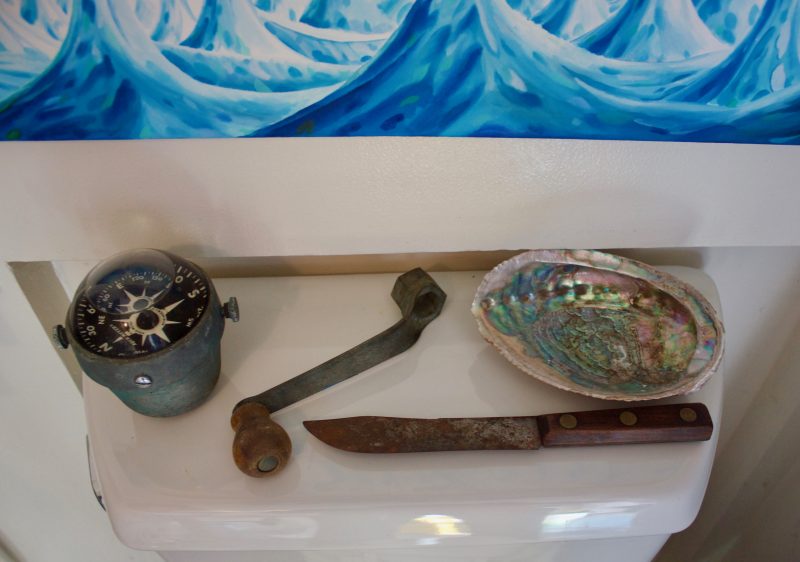
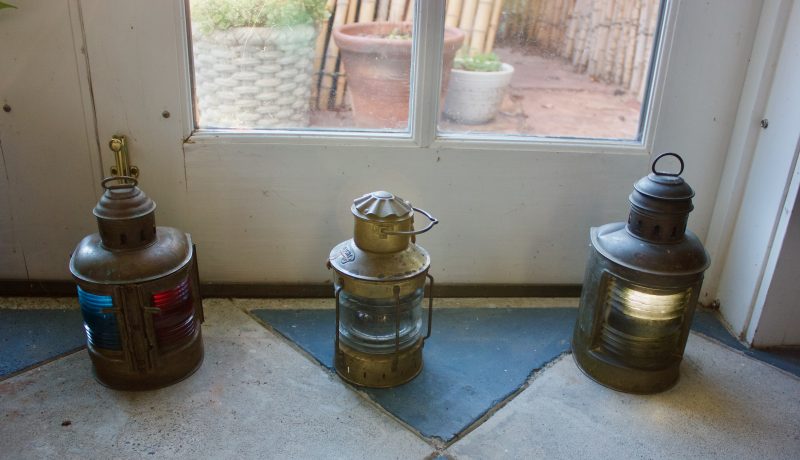
I considered, for a moment, restoring the lanterns to their fossil-fuel-burning status, but realized what a ridiculous idea that was. The lights are already full of black, chalky soot that comes from everywhere and stains everything forever — even soap. (Ask me how I know.) Besides, it’s much easier to put a small LED light in the lamps, rather than burning a fire.
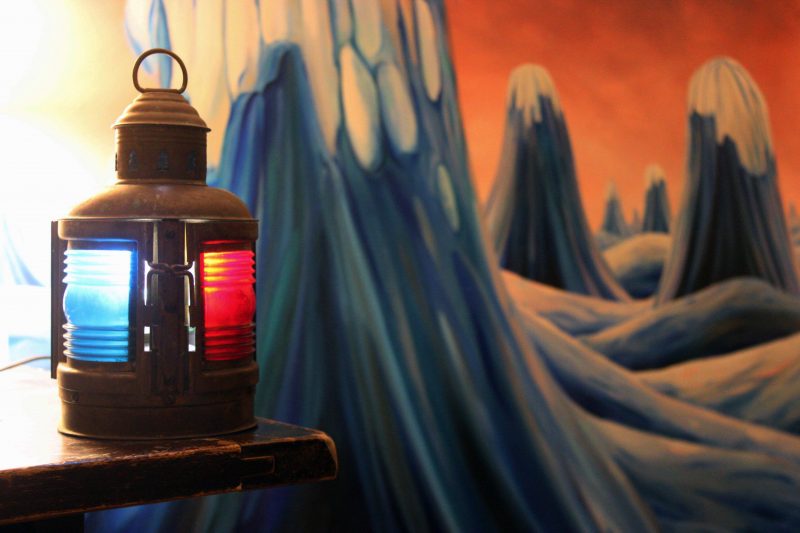
I have so many questions:
— Does anyone out there have a set like this?
— What kind of metal are these lights/lanterns likely to be?
— Would you polish, or no?
Unless Latitude Nation demands that I not attempt to polish the lamps, then what solutions should I use? (Being the Bay Area boy that I am, I would prefer the household and non-toxic to the high-priced shellac found in stores.)
(— Even after some research, I honestly don’t know whether to call bow-mounted port and starboard lights ‘running lights’ or ‘navigation lights’ — or are both correct?)
— And finally, back to that original question: What kinds of treasures do you have, and what kinds of stories are behind them? Please comment below, or email us here.
The title of this story has been changed from the original.

One of my prised nautical possessions is this 9.75 inch abalone that I collected free diving at about 20′ (back when that was allowed) off the Sonoma/Mendacino coast in 1966.
Don’t wreck them by attempting to polish them. They look like what they are, and if you need shiny, you can get new, “quainty” but often lame stuff at home-decorating stores. Nice, new ones should be available through other sources. The soot? Wipe the inside (but do this outside), vacuum it, then throw out the brush attachment since you will not want it any more. Set aside the original “inside works” and use an LED candle for illumination. I had the same temptations and experience with an old railroad lantern.
These are antiques, and to polish them destroys their patina and value.
You’ll be very pleasantly surprised how much they’re worth. Check on ebay. And don’t change anything that can’t easily be returned to original. Look for portable collapsible solar lights on the internet.
I restore, maintain and sell boats for a living and I love bringing old bronze, brass and silver bells and lanterns back to their original state. I dip them in a bucket of ketchup for about 12 hours and then rinse them off in the kitchen sink. After that, I know what kind of metal I’m working with and I either leave them be, or gently polish them with various products. It all depends on the object as to how far I go.
You have some great treasures, just as they are. What can you tell us about the “big seas” artwork in the background?
Thanks Alan. All artwork is mine, and can be found here: https://www.timhenryartproject.com/